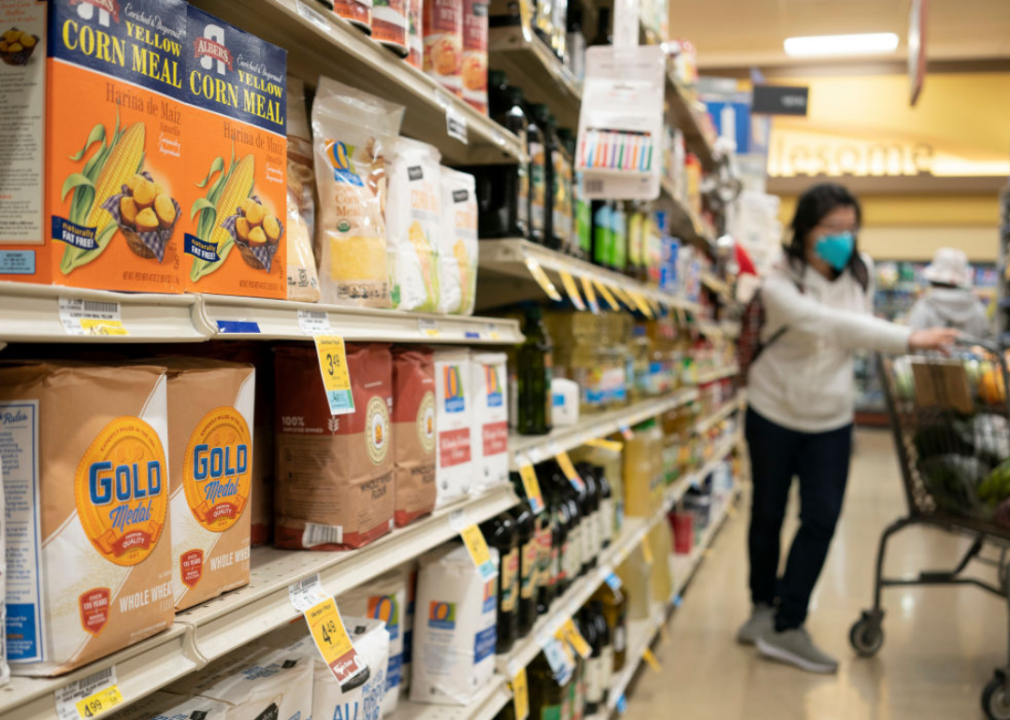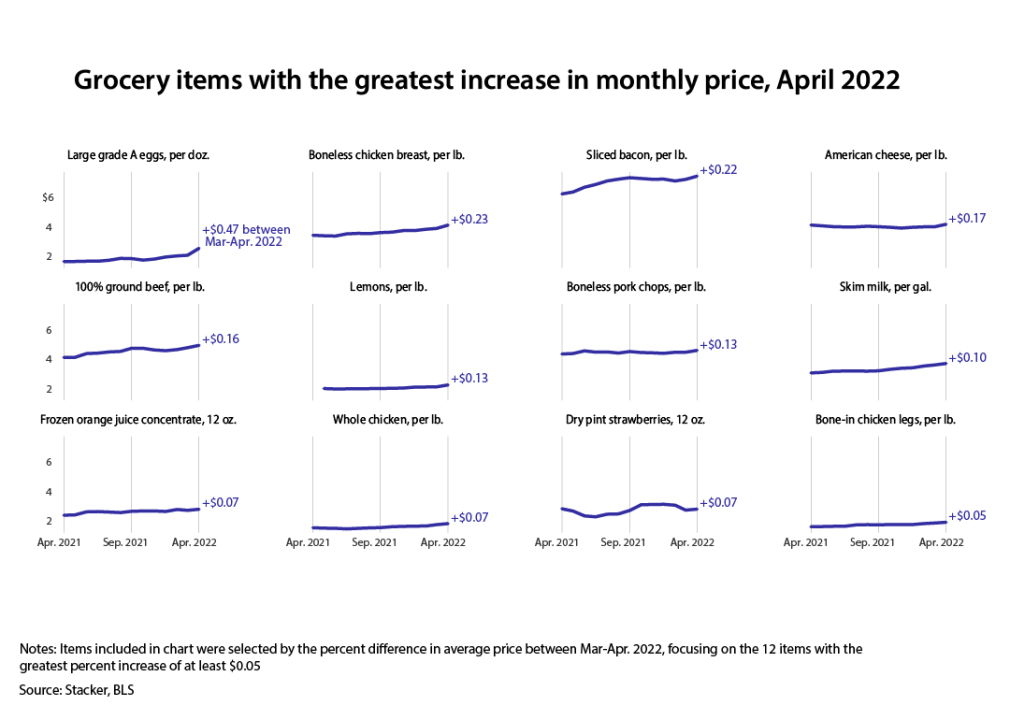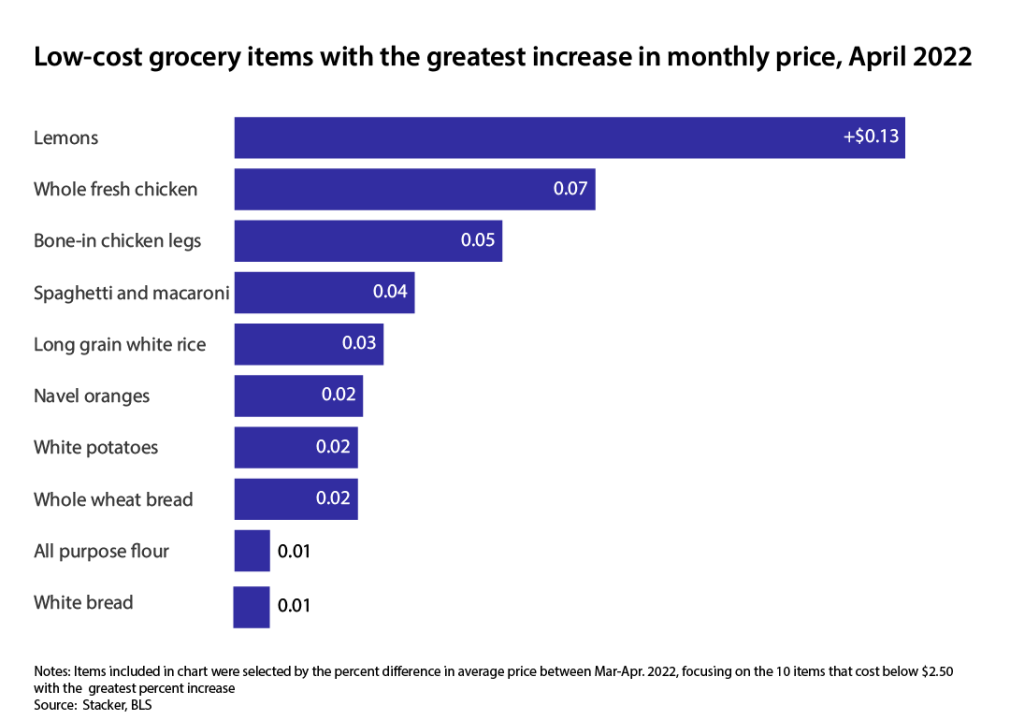Grocery items with the greatest price increase in April

Liu Guanguan/China News Service // Getty Images
Grocery items with the greatest price increase in April
Inflation rose 0.3% in April and 8.3% year-over-year, according to April Consumer Price Index data from the Bureau of Labor Statistics released Wednesday, May 11. The most recent numbers represent a modest reprieve from March’s staggering 1.2% month-over-month increase.
Stacker analyzed the Consumer Price Index data to determine which common grocery store items saw the largest price increases in April.
Despite the overall pace of headline inflation easing, the cost of groceries alone increased 10.8% since April 2021—the largest annual increase in 42 years. This increase was driven largely by a rise in prices of meat, poultry, fish, and eggs—up 14.3% year-over-year and the largest 12-month increase since 1979.
Looking more recently, April marked a 1% month-over-month increase in food at home prices. While this is down from the 1.5% gains recorded in March, it is still the 17th consecutive month the food costs, on the whole, have risen.
Fresh fruit was the only major food category that saw a price reduction, dipping 0.5% from the previous month.
![]()

Emma Rubin // Stacker
Higher labor and operational costs are driving up prices
Dairy prices rose 2.5% in April, marking the largest monthly increase in 15 years.
A slow rebound from pandemic-related supply chain disruption and higher costs of necessary operational expenditures like grain for cows and fuel for equipment are contributing to rising dairy prices.
Meat prices have also been impacted by higher labor costs, commodity prices, and growing consumer demand.
The index for eggs increased 10.3%—or nearly 50 cents—in April as many commercial poultry farms around the country culled tens of millions of chickens amid a highly infectious avian influenza outbreak.

Emma Rubin // Stacker
Global events continue to impact staple low-cost items
The average Supplemental Nutrition Assistance Program benefit per person is about $121 per month: less than $1.40 per meal for an individual. While these benefits are meant to help offset some financial burdens at the grocery store, they are not adjusted for month-over-month changes in inflation.
Even slight price variances of historically low-cost items can significantly impact budget-conscious consumers as inflation increases.
Staple items, including wheat, flour, and chicken, are not immune to price fluctuations caused by war. Vulnerable populations will feel the impacts on their grocery bills.
Chicken feed costs were impacted by Russia’s war in Ukraine; ingredients including sunflower meal and wheat are primarily produced by Russia and Ukraine. Those increases were passed down to consumers via higher poultry costs.
